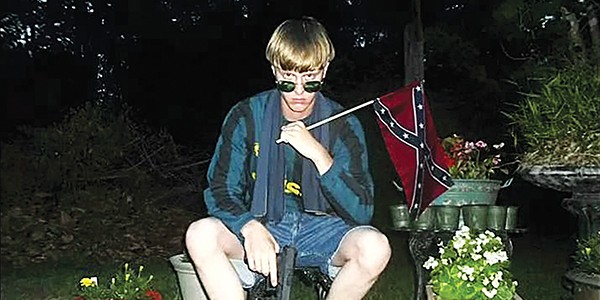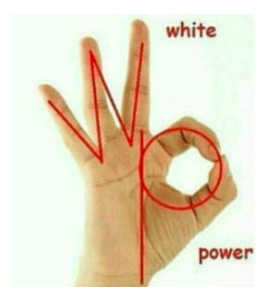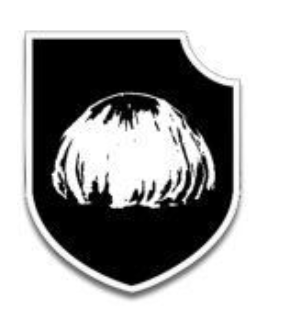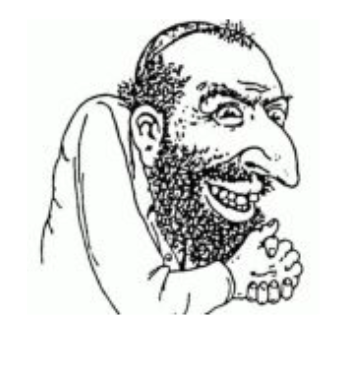
The bowl cut of white supremacist mass killer Dylann Roof is now a hate symbol, according to the Anti-Defamation League.
Is the OK hand symbol OK anymore?
Maybe, maybe not, says the Anti-Defamation League (ADL). If used by white supremacist groups, it’s a hate symbol.
The OK symbol was one of 36 symbols the anti-hate group added to its “Hate On Display” online database this year. Many of the symbols, memes, and slogans added this year are white supremacist symbols adopted recently by the alt-right segment of the white supremacist movement.
“Even as extremists continue to use symbols that may be years or decades old, they regularly create new symbols, memes, and slogans to express their hateful sentiments,” said ADL CEO Jonathan Greenblatt. “We believe law enforcement and the public need to be fully informed about the meaning of these images, which can serve as a first warning sign to the presence of haters in a community or school.”
Many of the new symbols have appeared at white supremacist events, such as the “Unite the Right” rally in Charlottesville, and were painted on the guns used by white supremacist mass killer Brenton Tarrant. Such slogans and symbols appear online on 4chan, 8chan, and Reddit, according to the ADL. Some have also spread into mainstream platforms like Twitter, Facebook, and gaming platforms.
Here are some of the new symbols or slogans added to Hate on Display this year, with explanation and opinions by the ADL:
• The “OK” hand symbol – Begun as a hoax by members of the website 4chan, the OK symbol became a popular trolling tactic. By 2019, the symbol was being used in some circles as a sincere expression of white supremacy.  Anti-Defamation League
Anti-Defamation League
Australian white supremacist Brenton Tarrant flashed the symbol during his March 2019 courtroom appearance soon after his arrest for allegedly murdering 50 people in mosques in Christchurch.
• Burning Neo-Nazi symbols – Neo-Nazis have adopted the Ku Klux Klan practice of symbolic burnings, substituting swastikas and other neo-Nazi symbols, such as othala and life runes, for crosses.
[pullquote-1] • Dylann Roof’s “Bowlcut” – The “Bowlcut” is an image of a bowl-shaped haircut resembling the one worn by white supremacist mass killer Dylann Roof.
 Anti-Defamation League
Anti-Defamation League
Roof’s bowl cut.
Those who use the bowlcut image or other “bowl” references admire Roof and call for others to emulate his 2015 mass shooting attack at Emanuel AME Church in Charleston, South Carolina.
• Happy Merchant – An anti-Semitic meme depicting a drawing of a Jewish man with heavily stereotyped facial features who is greedily rubbing his hands together. The meme is by far the most popular anti-Semitic meme among white supremacists, according to the ADL.
• “Anudda Shoah” – An anti-Semitic phrase that first became popular among white supremacists in 2014 to mock Jews, whom they claim bring up the Holocaust (“Shoah” is the Hebrew term for Holocaust) when confronted with anything they don’t like.  Anti-Defamation League
Anti-Defamation League
‘The Happy Merchant’
• Diversity = White Genocide – A white supremacist slogan intended to suggest multiculturalism will mean the demise of the white race.
Logos of various hate groups, including the neo-Confederate white supremacist League of the South, the neo-Nazi National Socialist Legion, the white supremacist Rise Above Movement (RAM), the white supremacist group Patriot Front, and the American Identity Movement, the white supremacist group that is successor to Identity Evropa.
“These are the latest calling cards of hate,” said Mark Pitcavage, senior fellow in ADL’s Center on Extremism and an expert on hate symbology. “While some hate symbols are short-lived, others take on a life of their own and become tools for online trolling.
“We pay special attention to those symbols that exhibit staying power, as well as those that move from online usage into the real world.”
[pullquote-2]